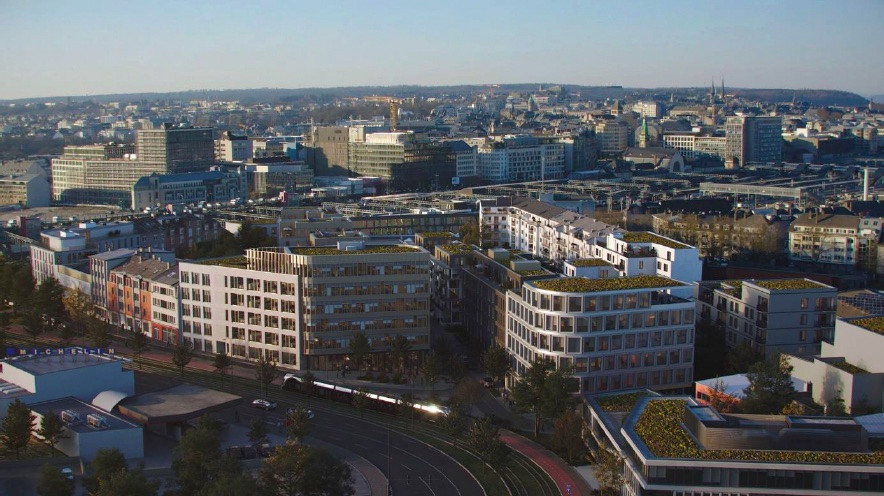Comprising some 4,250m2 of office space, The Bridge in Bonnevoie will be the first in Luxembourg to receive Carbon Footprint - Neutral certification, a labelling process carried out with the consultancy firm Énergie et Environnement.
Eaglestone says the building represents its commitment to the development of sustainable and environmentally friendly real estate projects that contribute to the fight against climate change. “This project was a good opportunity for us to implement a carbon certification process for the building, the first one in Luxembourg, which is a concrete expression of our group's responsible and societal commitment,” explains Jean-Christophe Bocci, technical director at Eaglestone Luxembourg.
Assess, reduce, compensate
Support comes from specialist consultancy Énergie et Environnement which is assessing the building’s carbon footprint, helping to significantly reduce emissions and, ultimately, offsetting the residual emissions linked to the deployment of the office space.
“The Carbon Footprint label, which is part of a 'measure-reduce-neutralise' approach, aims to support and enhance the efforts of players who are committed to reducing their carbon impact,” says Julien L'Hoest, partner at Énergie et Environnement. “It is based on ISO standards and international benchmarks that are now recognised, and applies to real estate developments as well as to any other activity carried out or goods produced.”
The Bridge is actually the first real estate project in Luxembourg to be included in this sort of process. This involves a precise evaluation of the carbon impact of the initial project via an audit of the quantities of materials being used.

The building is being developed in the context of the revitalisation of the Dernier Sol neighbourhood in Bonnevoie. (Illustration: Eaglestone)
The elements that emit the most CO2 are identified, and ways are sought to minimise their impact. The result is a 10% reduction in of the emissions--the equivalent of 100 return flights from Luxembourg to New York.
Measures to compensate for the remaining emissions are then put in place. In this case, Eaglestone's carbon contribution is to offset 2,900 tonnes of CO2 equivalent. This translates into the financing of regional projects that contribute to the reduction of global emissions: Eaglestone is committed to the restoration of a degraded forest area of approximately 18 hectares in the Moselle department in France, for example. This action is being carried out in collaboration with the French National Forestry Office (ONF).
“Through the Eaglestone project, the ONF will carry out a reforestation of diversified tree species that are better adapted to future climates, which will help restore a forest ecosystem impacted by climate change,” explains Christophe Fotré, territorial director of the ONF for the Grand Est. “With the storage of the equivalent of 2,900 tonnes of CO2 over a period of 30 years, the project will contribute to the mitigation of climate change and will also promote biodiversity.”
At a time when many forested areas are suffering cruelly from drought and health crises, it is essential to ensure the continuous renewal of the forest in order to adapt to climate change. This ambition is supported at the ONF by the development of “low carbon” labelled projects, which allow companies to contribute to highlighting the essential role of forests in regulating the climate and protecting biodiversity.
The label obtained at the “project” stage will be confirmed once the building has been handed over to its owners, in particular after checking that the elements aimed at minimising the project's carbon impact have been implemented.
This article was first published in and has been translated and edited by Delano
